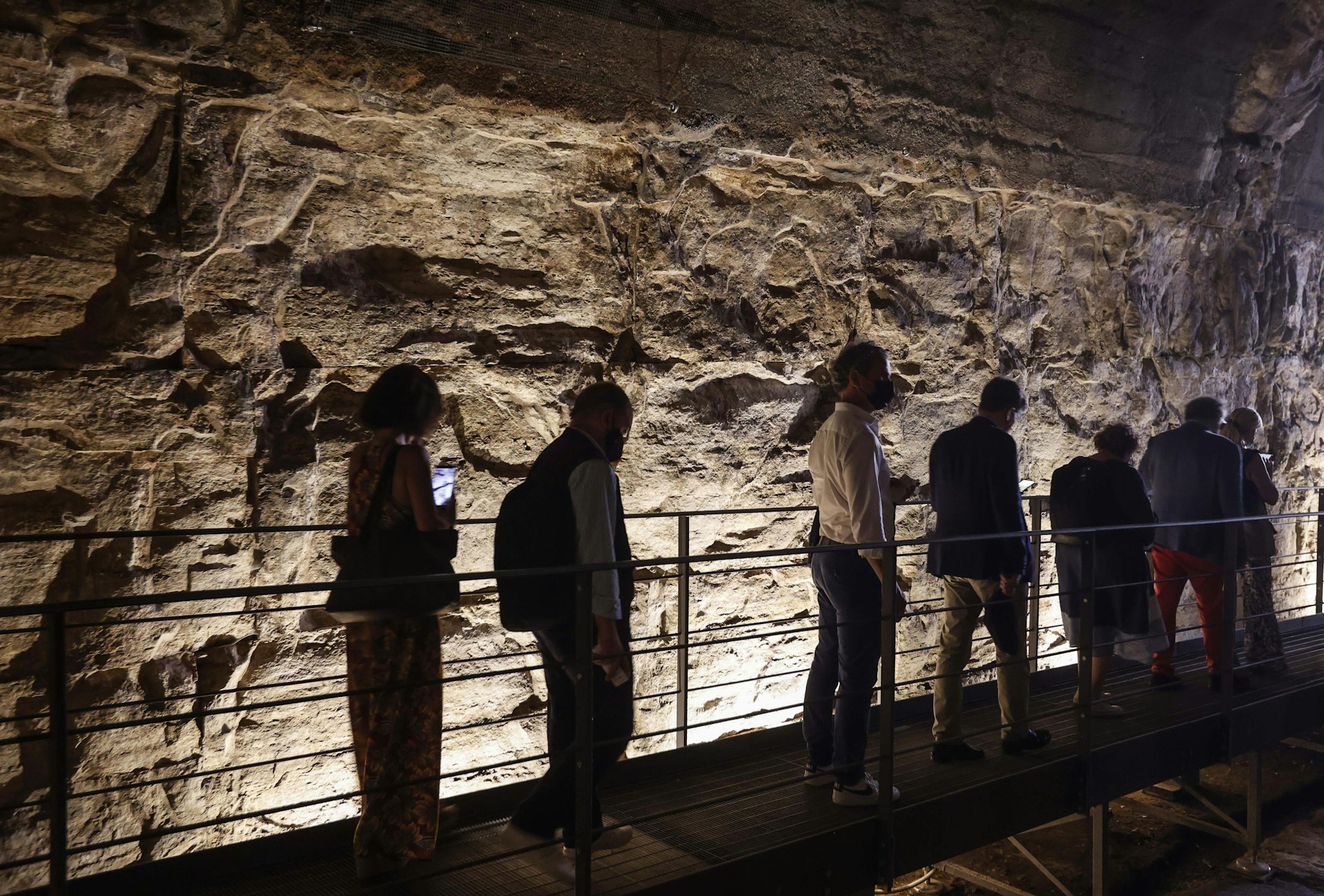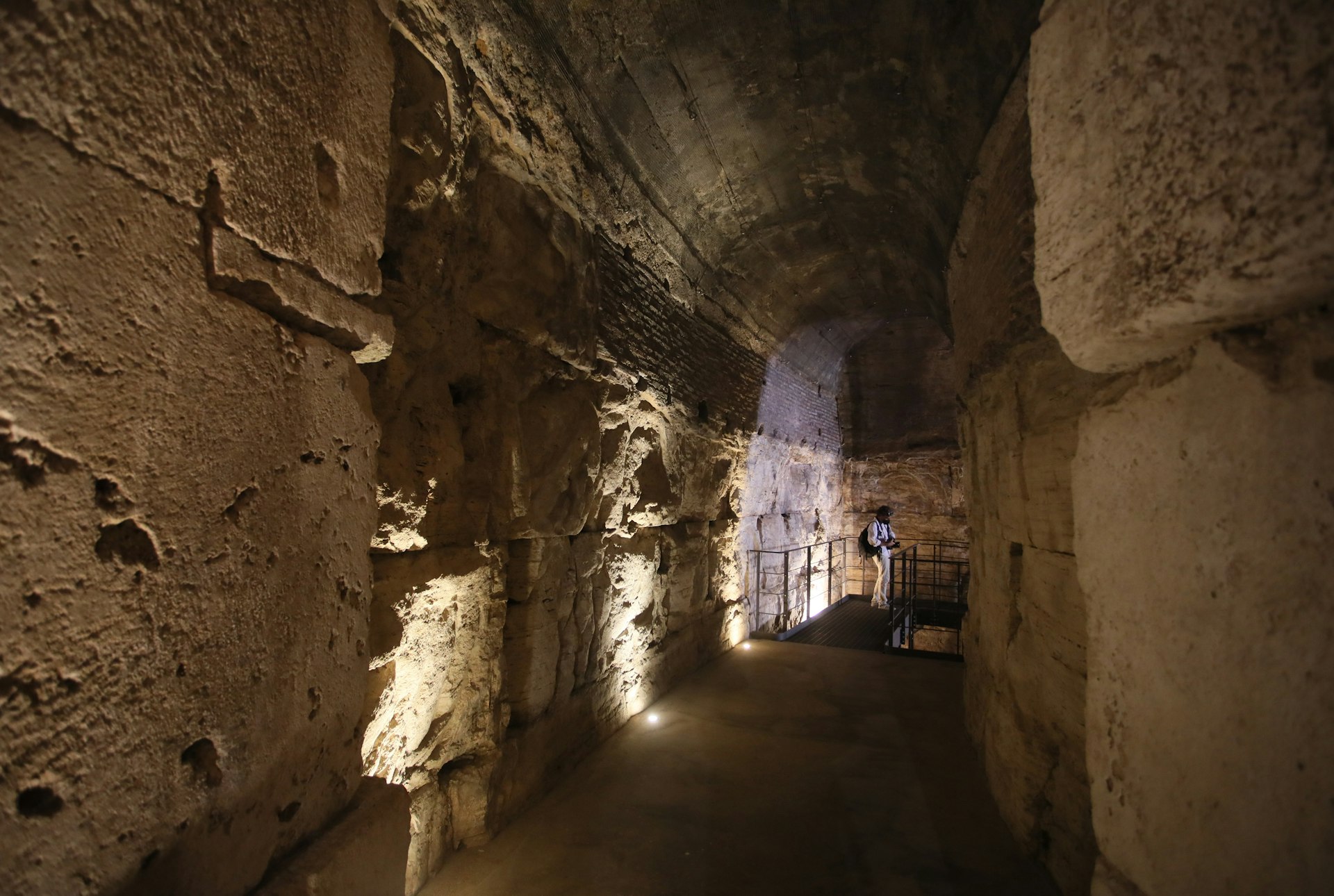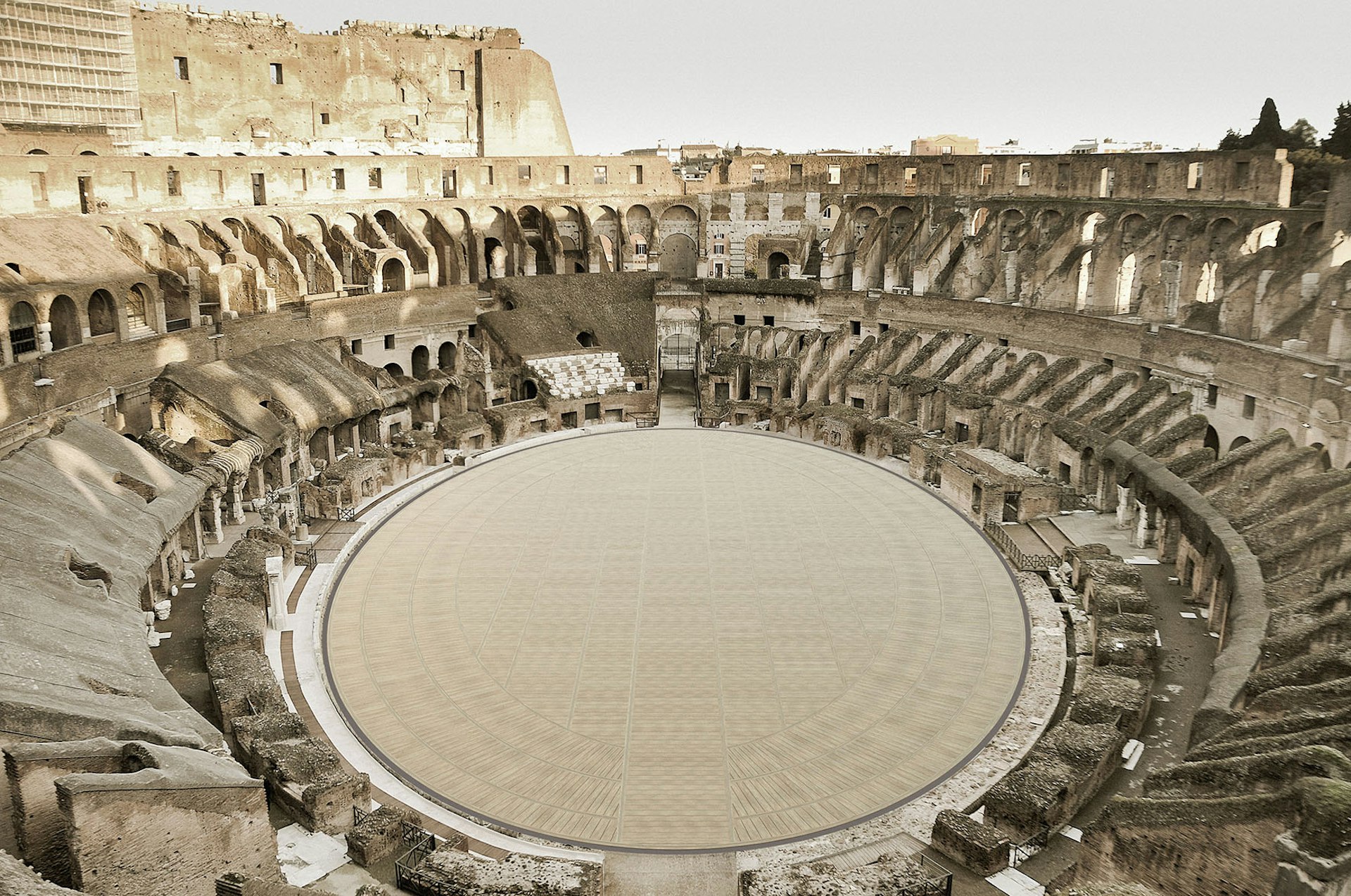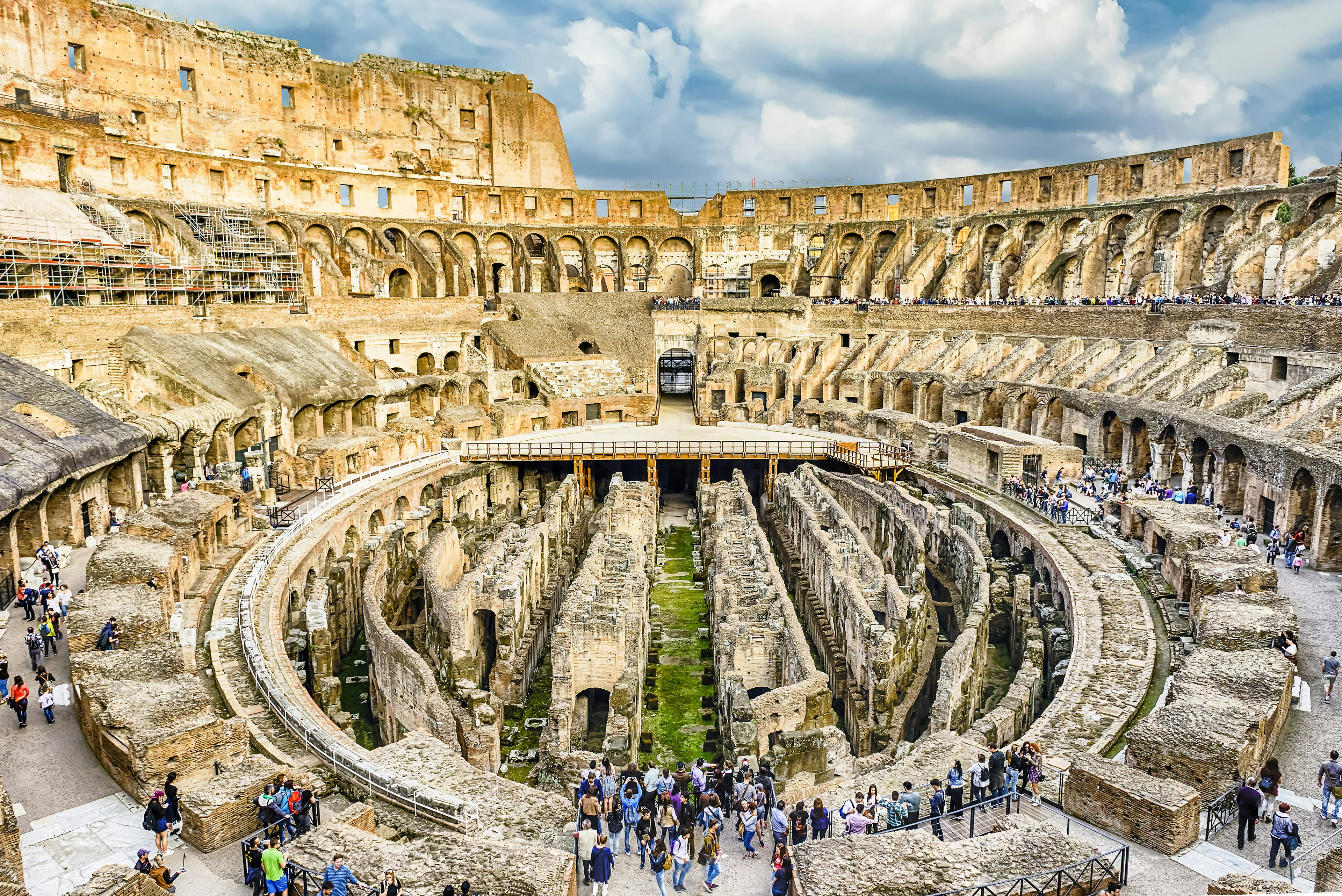The ancient underground tunnels of Rome's famed Colosseum have opened to the public for the first time.
Beneath the Colosseum floor that hosted gladiator fights, mock naval battles, theatrical performances and grisly public executions, there's a whole other world. The secret underground world or "hypogeum" was the belly of the beast, a warren of underground chambers and massive vaulted passageways where gladiators, enslaved people and wild animals were held, and sets were prepared. Crowds gathered above to watch gladiators fighting the animals or each other, and the last battles were fought there in the fifth century AD.
Read more: When is the best time to go to Rome?

From 80AD until the final show in 523AD, the public were banned from entering below stage level. Then in 2010, they had a chance to peer down into the underground level when a small section was opened. But now a major restoration project, which began in 2018, has peeled the layers right back, allowing visitors to explore some of the original tunnels that criss-cross the arena through a new 160 meter (530 feet) accessible walkway. They can explore the chambers, see the lift shafts that hoisted animals and humans through the trapdoor to face a bloodthirsty crowd, and learn more about the 2000-year-old monument in greater, and sometimes gory, detail.
The underground area opened on Saturday, July 26 and can be accessed with the Full Experience Colosseum ticket. It marks the second phase of the ongoing restoration project financed by the Italian shoemaker Tod's. The first phase involved a clean-up of the Colosseum's facade, and the final part will restore the galleries, install a new lighting system and introduce a new visitor center in 2024.
Read more: Top 7 day trips from Rome

That's not all, a separate restoration project, financed by the Italian firm, Milan Ingegneria, will build a new 3000-square-meter retractable floor that will allow visitors to walk across Italy's top visitor attraction for the first time since the late 1800s.
The original wooden, sand-covered floor was removed when archaeologists began to excavate the subterranean levels of the arena but the new high-tech floor will replace it. Made from stainless steel and covered with Accoya wood, it will be retractable and can be used in different configurations to be managed remotely. The aim is that it will be possible to quickly cover or uncover the newly-reopened underground networks below, allowing them to be protected from the rain or aired out, if required.

The floor is also reversible, so it can be removed if plans for the Colosseum change in the future. Having a floor opens up the possibility of events being held at the ancient amphitheater, such as theater productions and concerts. "It will be a major technological intervention that will offer visitors the opportunity to, not only see the underground rooms, but also appreciate the beauty of the Colosseum while standing in the centre of the arena," says culture minister, Dario Franceschini.
The floor is expected to be completed by 2023.
This article was first published on January 4, and updated on June 29, 2021.
You might also like:
Street food stall discovered in Pompeii reveals dining habits of Ancient Romans
Pompeii’s historic museum reopens with new artifacts
Archaeologists have discovered the remains of a vast Mayan palace near Cancún


